
 |
| Top, the Wooster Street, the Hudson River, “The Red Hook”, Dean Haspiel, middle reading at the Brooklyn Historical Society, and bottom, paying my fine in DC. |
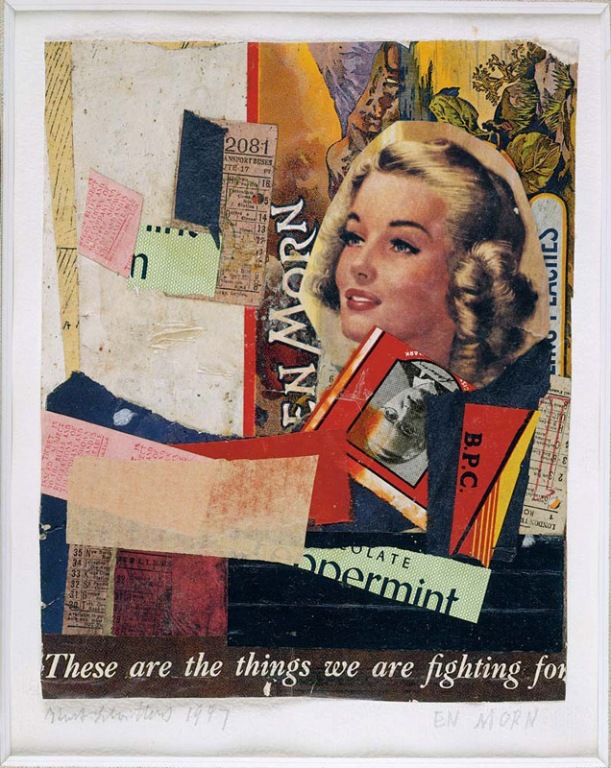 |
| Kurt Schwitters, En Morn (1947). Image courtesy of the Tate Britain. |
Midway through our Brooklyn
Tides talk at the Brooklyn Historical Society last Wednesday, Mark Noonan referred
to a passage Theodore Dreiser wrote about New York nearly a century ago.
“My only excuse for offering these very brief
pictures of the City of New York as it was between 1900 and 1914 … is that they
represent in part, at least, certain phases which at that time most arrested
and appealed to me, and which now are fast vanishing or are no more. The city is larger. It has, if you will, more amazing
architectural features. But has it as
vivid and moving social contrasts, —as hectic and poignant and disturbing
mental and social aspirations as it had then?
I cannot see that it has. Rather,
as it seems to me, it is duller because less differentiated. Of that old zest that seemed to find
something secret and thrilling in a thousand nooks and corners of the old city,
its Bowery, its waterfront, its rialto, its outlying resorts, not a trace. The truth is that it is not here. It has vanished—along with the generation
that felt it.”
Theodore Drieser, The Color of a Great City (1923)
Theodore Drieser, The Color of a Great City (1923)
We always feel like the city has vanished. But what is the real city and what are our
memories? How much of this is us and how much is it the city, the subject and
the object ever dancing together, reimagining, shifting, as we grow older, the
years of our lives moving by. Walking
through the city, its buildings being torn down and rebuilt, crumbling and growing,
through cycles of reproduction, with new materials, replacing the old, prefab here,
tacky here, maybe some reification there. We wonder what would happen if this
garden was saved, this building was not there, this bank was a porn shop like
it used to be, this condo was a squat, or we created something else with our
city.
In his graphic novel, “The Red Hook”, Dean
Haspiel wrote:
“It started the day the white flags replaced
the American flags atop the Brooklyn Bridge … six days later Brooklyn pulled
itself apart, away from the rest of New York State and seceded. Literally… That
day, Brooklyn shrugged and challenged humanity to return back to a time when
people were defined by their ethics, values, and contributions, a place where
skills and art could be bartered and traded and soil farmed to sustain life and
spawn beauty. A new republic that could exploit the fruits of new ideas and
conquer new problems and new villains with new heroes. By crook or by hook.”
Brooklyn has always been a place where such lines
blur; it was the space where Alvy worried that the universe was expanding.
Today we see it as a space where rents and tides are rising, wiping us away. It’s
the space I return to after my travels, always a little changed and glad to be
home. Its my base for my adventures and
stories. Friday, I drove to DC to pay a fine
for my most recent arrest. With over
five hundred of us arrested police could not process it all. From Brooklyn to
Staten Island, over the Goethals Bridge to Elizabeth, New Jersey and
South on 95 to Pennsylvania, I drove, through Maryland and Delaware, looking at
the lighting shining over the Susquehanna, onto DC, and back, not exactly in that
order, the city ever ahead of me. We’re always different after going to and
from.
Saturday, I rode my bike into to read Benjamin
with my study group, exploring the galleries on Wooster Street.
“The Work of Art in the Age of Mechanical
Reproduction” was the reading for the day. Writing about film and fascism, Walter
Benjamin observed:
“By close ups of the things around us, , by focusing
on hidden details of familiar objects by exploring commonplace milieus under the
ingenious guidance of the camera, the film, on the one hand, extends our
comprehension of the necessities which rule our lives; on the other hand, it
manages to assure of an immense and unexpected field of action. Our taverns and our metropolitan streets,
our offices and furnished rooms, our railroad stations and our factories
appeared to have us locked up hopelessly.
Then came the film and burst this prison-world asunder by the dynamite of
the tenth of a second, so that now, in the midst of its far-flung ruins and
debris, we calmly and adventurously go traveling. With these close-ups, space
expands; with slow motion, movement is extended.”
Reading Benjamin, images flash of Kurt Schwitters
photomontages, Leni Riefenstahl film scenes, arcades, a flaneur riding over a
bridge, a kid hiking in the South of France fearing the encroachment of the fascists,
a man writing in a café, sharing drafts of papers with Adorno, a writer imagining
walking in New York City. He wrote his
essay in 1935, the year of Triumph of the
Will. Reading I find myself dreaming about the experiments in form he set
forth with his critical essays, the ethnographies of walking, his essays which extended
the boundaries of non-faction and criticism, memoir and form, inspiring Borges’
magic realistic ficciones I read, my mind exploding in orgasms of light, books
and ideas transformed in the library at Vassar all those years ago.
It opened a way of imagining pleasure, seeing
the city as a space for dialectical clashes and contrasts, hopes and losses.
A wildly imaginative space, I’m always intrigued
by it.
All weekend long, this image of the city opened up for me, riding to the 6BC
Botanical Garden, the beautifully curated garden tucked in the middle of the
block (6th St between B and C), where they were hosting an art show the
participants,works by
Kamen, Evans, Ruiz, Lieberman, Neuscheler in collaboration with 6BC Community
Garden.
Saturday
was another beautiful autumn day.
I always love riding East to the
Lower East Side. Back in SOHO, the city
was popping with art, bulldozers, graffiti, murals, artists selling their
wares, people painting, messages on the walls, bright colors on the walls at Punch,
spectacles of radical street performance, Rubbish
and Dreams, and brave beautiful outlaws, lesbians through the ages at Leslie-Lohman Museum
of Gay and Lesbian Art.
Installations by FIERCE Pussy:
Walking through the galleries, I thought of the
people I saw in DC, the women pleading to be heard, screaming we’re not going
back. Those to and from DC brought me in contact with countless friends, many I’ve
known for years, others for just months. Throughout the week, a few of them
wrote gripping posts about loss.
My friend Eric Sawyer wrote about his yearnings
for a few more happy endings, queer films where boys and boys sometimes just
get to live happily ever after.
“Tonight
I watched another gay themed movie on Netflix; “Handsome Devil”, a coming out
story worth watching! Watching gay movies is a reoccurring theme for me, late
at night when I’m alone. I’m always looking for a gay movie that has a happy
ending, where the boy gets the boy and the true love of soulmates wins. ...
Looking for an alternative to my reality of my soulmate dying of AIDS at 30
leaving me a forever the grieving widow at 32.
People
wonder why long term survivors like me, who have buried a lover, or worse more
than one lover, soul mates to our Impressionable youth desperate for love, are
forever in mourning, even after seemingly successful lives. People look at our
Survivor’s Guilt and the Post Trumatic Stress Disorder of long term survivors
as excuses for people who are trapped in the Adrenaline rush of the late 1980s,
and 90s, when the aids community was at the peak of it’s Relevance to the Pulse
of the US consciousness. They think we are looking for excuses for our refusal
to move on with our lives.
They
don’t realize how lost we are, how deeply scarred we are from the loss of love,
or from the pain that was so deeply burned into our hearts, as we tried,
unsuccessfully to easy the pain of our loved ones as they breathed their final
breaths. Or how the loss of most of the friends from our youth have left us
vulnerable, without our army of comrades.
I
don’t really know why I am writing this, I guess it’s out of some deep felt
sense of loss. I’m really tired of a world that doesn’t care about social justice,
about inequity, that doesn’t value human live, or the feelings of others.
I
long for a world of hope, where every life matters and where people really
fight together for the common good of humanity and for the health of our
planet.
I
listen to the news which recounts the actions of Dictators that behead
journalists and reports how people of power sell excuses for immoral behavior
like a hot dog vendor peddle garbage on the corner for pennies.
I
don’t have much hope for our future, unless we all awake soon and realize that
we, the people, have to find our voice and rise and resist the immorality of
our time. We have to demand a Just and moral reality, NOW!
Please
wake up, take action, speak out! Demand others engage in what is happening in
this country. Demand that the people’s right to vote is honored! Demand that
that the US Government find it’s moral integrity!
The
future of our planet depends on this.”
Eric and I have
talked about this feeling for years and years now. Its one all AIDS activists share,
particularly those such as Eric who lost partners.
Emily
Gallagher was with us for one of the busts in DC. When she read Sawyer’s post, memories came
flowing back about a friend who overdosed earlier in the spring. At the time, she wrote
a blog about her year of magical thinking, the crazy thoughts Joan Didion
suggests we all experience after loss.
The
first entry in her “Grief Blog” is entitled “The
Cruelest Month,” apparently referring to TS Eliot.
“its almost a month since you
left me and on friday, i woke up, and just started sobbing, realizing that you
really –aren’t– coming back. And no matter what we were going to do with
our relationship, what you were going to do with your drug habit, in an
alternative reality i would still be talking to you every day, i’d be helping
you get a new job, i’d be helping you get into the school of your dreams, I was
ready to do it all and willing to.
Now all that i can think about is how to fill this gaping
hole. This hole of energy and joy and effort that was filled with the
power formed through the circuit between you and I…”
It’s a magic feeling we all have connecting the universal
feelings we experience in this world. We
act up, grieve, love, drink, and dream.
Emily wrote about a dream after reading Sawyer’s post:
“TL:DR:
speaking a bit about the dead. And about being happy/sad all the time.
It's
saturday night and i had plans but i bailed on em. Truth be told, I'm
emotionally exhausted.
I am so blessed with good work, wonderful friends and a great life. I have deeply loving people in my daily life and new people and new opportunities. I have support and true purpose. I have had the wonderful experience of following my dreams and seeing what unexpected places they have lead me to; I have gotten to realize how wrong I have been about myself, about some ideas I've had, about others, about life. Not just over my whole 34 years but even since this summer. Life is ever changing.
I mention all these things because all this week I've cried at night. I still miss him, and I think of him every day. I still can't believe he's dead, and how deeply my good-faith attempts to connect with others who loved him, so enormously failed. Grief is lonely in so many ways; but sometimes people can make it even lonelier.
A joke, an absurdity, or a memory and he's right there with me. I know I always will think of him this way. I've learned there is space for both this pain and new joy. But the pain is still very much real pain. It is very much a daily presence in me and I am not waiting for it to go away; I'm simply learning to coexist with it.
He came by the other night in my dream. In the dream it was pouring rain and the rain was freezing cold. He came out of a house with a towel draped over his head and he pulled me under the towel with him. As long as we were under the towel we were dry, even there in the middle of the storm. The towel was expansive, it was like being in a tent. In the dream we both knew he was dead. We didn't say it outright but we talked how long it took him to find his way into my dreams. He told me how he felt about being dead, but mostly he made jokes. He was really there.
And then i woke up, and it was morning. and I turned on the radio and listened to the news. And i tried to get my strength up to fight again for this world. But it's hard. It's still so hard sometimes. And i have only lost this one person that I loved in this way; I think about the families in warzones who have been bombed to bits, or others, and I just don't even know how they persist.
And maybe the hardest part is that I am really happy, in probably one of the happiest periods of my life personally, and yet I am so deeply sad too.
And this is why I feel we have to fight. Because we are the walking wounded; because life is painful and tragic; and all we really have are the efforts that we can make to create a space for people to make safer, healthier, more loving decisions for themselves, their well being, and the ones we & they love. To treat each other with tenderness and understanding and joy. To really be open to freedom and love and support and personal space.
And greed destroys that. And hate and close-mindedness destroy us. And anger, disgust & apathy do too. And to me that's what these elections and other affairs are about. The freedom to just simply live and feel happy and safe and to know we will be treated fairly. Not everyone has it. And everyone deserves it. Because life is too hard. It's just too too hard without it.”
I am so blessed with good work, wonderful friends and a great life. I have deeply loving people in my daily life and new people and new opportunities. I have support and true purpose. I have had the wonderful experience of following my dreams and seeing what unexpected places they have lead me to; I have gotten to realize how wrong I have been about myself, about some ideas I've had, about others, about life. Not just over my whole 34 years but even since this summer. Life is ever changing.
I mention all these things because all this week I've cried at night. I still miss him, and I think of him every day. I still can't believe he's dead, and how deeply my good-faith attempts to connect with others who loved him, so enormously failed. Grief is lonely in so many ways; but sometimes people can make it even lonelier.
A joke, an absurdity, or a memory and he's right there with me. I know I always will think of him this way. I've learned there is space for both this pain and new joy. But the pain is still very much real pain. It is very much a daily presence in me and I am not waiting for it to go away; I'm simply learning to coexist with it.
He came by the other night in my dream. In the dream it was pouring rain and the rain was freezing cold. He came out of a house with a towel draped over his head and he pulled me under the towel with him. As long as we were under the towel we were dry, even there in the middle of the storm. The towel was expansive, it was like being in a tent. In the dream we both knew he was dead. We didn't say it outright but we talked how long it took him to find his way into my dreams. He told me how he felt about being dead, but mostly he made jokes. He was really there.
And then i woke up, and it was morning. and I turned on the radio and listened to the news. And i tried to get my strength up to fight again for this world. But it's hard. It's still so hard sometimes. And i have only lost this one person that I loved in this way; I think about the families in warzones who have been bombed to bits, or others, and I just don't even know how they persist.
And maybe the hardest part is that I am really happy, in probably one of the happiest periods of my life personally, and yet I am so deeply sad too.
And this is why I feel we have to fight. Because we are the walking wounded; because life is painful and tragic; and all we really have are the efforts that we can make to create a space for people to make safer, healthier, more loving decisions for themselves, their well being, and the ones we & they love. To treat each other with tenderness and understanding and joy. To really be open to freedom and love and support and personal space.
And greed destroys that. And hate and close-mindedness destroy us. And anger, disgust & apathy do too. And to me that's what these elections and other affairs are about. The freedom to just simply live and feel happy and safe and to know we will be treated fairly. Not everyone has it. And everyone deserves it. Because life is too hard. It's just too too hard without it.”
Perhaps this is a city where will grow old, the city changing in front of
us, as we walk through time.
The greatest struggles in life are often over friends, Caroline conceded
at Café Loup, after walking with me through the ever-changing village. How do we find a space for disagreements and
departures, conflicts and struggles over meaning?
Do we go high or low, Donna wondered at Judson on Sunday. What’s the
point in asking, she wondered, rejecting false binaries, pointing to something
magic in between in Isaiah 55:12:
“You will go out in joy and be led
forth in peace; the mountains and hills will burst into song before you, and
all the trees of the field will clap their hands.”
Perhaps we can find ourselves in between, in a space where
up and down are connected, heaven and hell are neighbors and we no longer need
binaries.
The message took me through the entire day, walking
the streets of Brooklyn, making pumpkins, exploring the studios, walking into
galleries in people’s homes.
My friend Steven Solomon was displaying his montages
in his laundry room, chatting with everyone that dropped by. We talked about Kurt Schwitters
and words that come at us as we walk through the city, reconciling memories
with ever present conflicts, photos clashing with streets, texts intermingling
with adds, the commodity form reaching for us and neighbors pushing back,
keeping Molock in check. Taking it all
in, Steven smiled and talked about his work, welcoming conversation with
strangrs.
Down the street, my favorite gallery had been sold.
It was now under construction.
Two kids swung on the swings, attached to drums, clanging
in the autumn afternoon, new sounds pouring through the distance.
How Is the Air Up There?
A series of photographs by Oliver Ressler
2018
The photographic series “How Is the Air Up There?” was shot in April 2018 in Hambacher Forest, the scene of Europe’s longest ever tree-top occupation. For 6 years now, around 100-200 people have lived in this forest near Cologne, Germany, preventing its planned destruction by clear-cutting. The last surviving section of the highly biodiverse 12,000-year-old forest was supposed to be sacrificed to the Hambach open-cast mine, where the coal-dependent energy company RWE intends to exploit lignite until 2045. RWE is well aware that the end of coal is near, but it wants to make the felling of the forest an irreversible matter of fact, allowing it to go on turning a profit from destruction by burning the coal beneath the trees in its nearby power plants.
The situation has changed dramatically since September 13, 2018, when 3-4,000 police were moved in to evict the occupation, tearing down barricades, tree houses and kitchen facilities in a nonstop, day-and-night assault lasting two weeks. This operation led to the death of a 27-year-old journalist and provoked heated debate on Germany's hypocritical climate policy. Although Germany is still sometimes seen internationally as a pioneer of successful ecological transition, it is highly likely to miss its own climate targets in 2020.
On October 5, 2018 a German court ordered the suspension of the Hambach Forest clearance. It may take months or even years now for the court to decide whether RWE has the legal right to extract the coal beneath the forest as it intends. This huge victory demonstrates that people acting collectively with commitment are capable of protecting a forest. It proves that meaningful, effective action against the catastrophic warming of the planet is indeed possible.
The photographs in the series “How Is the Air Up There?” were taken from below, using a wide-angle lens directed towards the canopies. The protesters remain invisible in the photographs (as a precaution against repression and other unwanted consequences), but their tree houses, their rope bridges and the banners strung through the branches and leaves seem to constitute a visual representation of one of the slogans of the climate movement: “We are nature defending itself!”
A series of photographs by Oliver Ressler
2018
The photographic series “How Is the Air Up There?” was shot in April 2018 in Hambacher Forest, the scene of Europe’s longest ever tree-top occupation. For 6 years now, around 100-200 people have lived in this forest near Cologne, Germany, preventing its planned destruction by clear-cutting. The last surviving section of the highly biodiverse 12,000-year-old forest was supposed to be sacrificed to the Hambach open-cast mine, where the coal-dependent energy company RWE intends to exploit lignite until 2045. RWE is well aware that the end of coal is near, but it wants to make the felling of the forest an irreversible matter of fact, allowing it to go on turning a profit from destruction by burning the coal beneath the trees in its nearby power plants.
The situation has changed dramatically since September 13, 2018, when 3-4,000 police were moved in to evict the occupation, tearing down barricades, tree houses and kitchen facilities in a nonstop, day-and-night assault lasting two weeks. This operation led to the death of a 27-year-old journalist and provoked heated debate on Germany's hypocritical climate policy. Although Germany is still sometimes seen internationally as a pioneer of successful ecological transition, it is highly likely to miss its own climate targets in 2020.
On October 5, 2018 a German court ordered the suspension of the Hambach Forest clearance. It may take months or even years now for the court to decide whether RWE has the legal right to extract the coal beneath the forest as it intends. This huge victory demonstrates that people acting collectively with commitment are capable of protecting a forest. It proves that meaningful, effective action against the catastrophic warming of the planet is indeed possible.
The photographs in the series “How Is the Air Up There?” were taken from below, using a wide-angle lens directed towards the canopies. The protesters remain invisible in the photographs (as a precaution against repression and other unwanted consequences), but their tree houses, their rope bridges and the banners strung through the branches and leaves seem to constitute a visual representation of one of the slogans of the climate movement: “We are nature defending itself!”







































































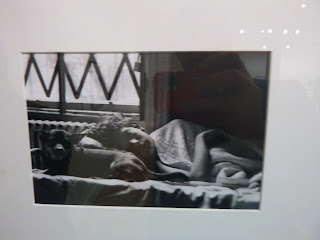











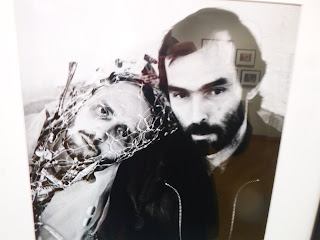


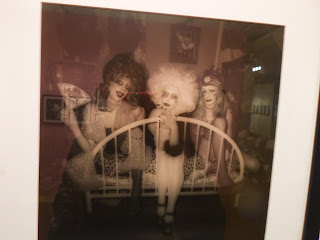






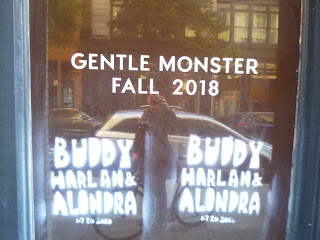




































































No comments:
Post a Comment